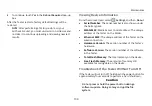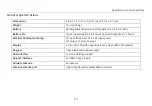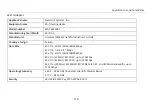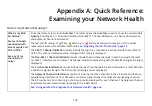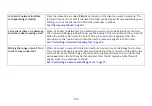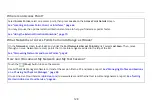
123
What is my Wi-Fi
Network Quality?
Can I hear access
points that support
my networks?
Can I connect?
Are there coverage
holes in this area?
Are there too many
close APs using the
same channel
making my
network slow?
To test your Network Quality, you must configure your AirCheck G2 with the proper credentials to connect
to the network and/or access points.
See “Entering Network Security Credentials," page 49.
Next, go to the
AutoTest Settings
screen (
(
Settings) > AutoTest Settings
), and select the networks you
want tested during
AutoTest
.
From the Home Screen, touch
AutoTest
.
The tester opens the
AutoTest
screen, with the
Network (SSID)
Test
results below the Air Quality results. The test results ratings—
Pass
,
Warning
, or
Fail
—are
based on a comparison of the actual measured value to user settable thresholds.
The
Connection
test checks the status of Wi-Fi authentication and association to the target AP, by
attempting to link to the selected network. Test results indicate whether or not you can connect at your
current location and provide other measurements of the health of your connection, such as transfer (
TX
)
rate, packet retries, and average, minimum, and maximum readings for signal strength, noise, and SNR.
The results are presented along with a rating of
Pass
,
Warning
, or
Fail
based on the thresholds.
Part of the Connection test results,
Network Coverage
results indicate the number of APs with a
minimum signal level that are supporting the network (SSID). Network Coverage also receives a test rating
of Pass, Warning, or Fail, based on a comparison of the measured values to user settable thresholds. For
good network quality, at least two APs (on different channels) above -67 dBm are typically recommended.
Also under Connection results, the
Co-Channel Interference
results show the number of overlapping APs
on the same channel as the network (SSID), along with the rating of
Pass
,
Warning
, or
Fail
, based on a
single network (SSID) comparison to thresholds.
Next, AutoTest indicates whether an
IP address
could be obtained via DHCP, and finally, AutoTest checks if
devices essential to the connection are reachable (
Default Gateway
,
DHCP Server
,
DNS
servers), along
with any user-configured
Targets
, via Ping or TCP Port Open test.
See “Using AutoTest to Diagnose Your Network Health," page 36.

